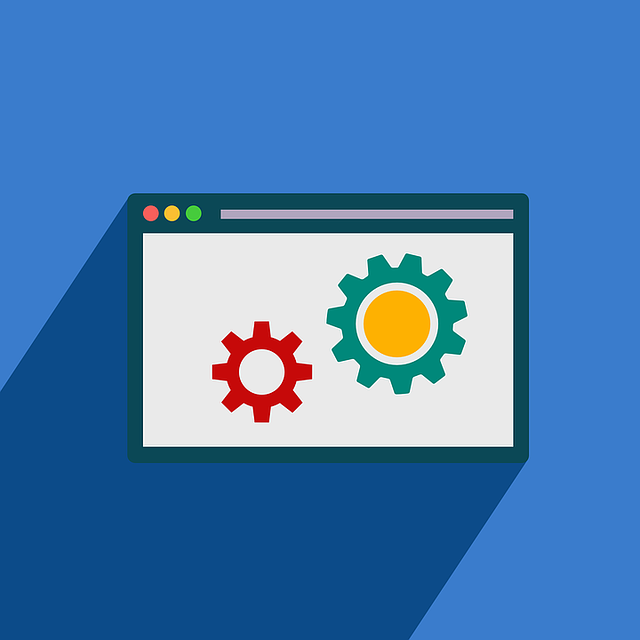Redesigning a website involves strategic planning, starting with defining core objectives, setting specific goals, and budgeting meticulously. Choose cost-effective tools like WordPress or user-friendly builders for efficient website management. Simplify designs to reduce costs and enhance performance, focusing on essential features for optimal user experience. Decide between outsourcing and in-house development based on budget and project scope. Measure success through key metrics like user engagement and conversions to ensure a successful website maintenance strategy that drives tangible results.
Looking to refresh your website without breaking the bank? This guide offers a comprehensive roadmap for an affordable website redesign. From identifying core needs and setting realistic budgets to selecting cost-effective tools, streamlining design, and prioritizing features, we cover it all.
Learn how to balance quality with savings through strategic outsourcing or in-house development. Discover metrics to measure success and ROI post-redesign, ensuring your website growth aligns with your investment. Get ready to transform your online presence efficiently and affordably.
Understanding Website Redesign Needs and Goals

Redesigning a website is not just about aesthetics; it’s a strategic move that requires a deep understanding of your business goals and target audience. Before diving into the redesign process, it’s crucial to define the core objectives and needs. This step involves assessing the current site’s performance, identifying pain points, and pinpointing areas where improvements can drive better user engagement and conversions. Effective website maintenance strategies begin with setting clear goals, whether it’s enhancing usability, improving search engine rankings, or creating a more visually appealing design that resonates with your audience.
By aligning the redesign with specific business objectives, you ensure that every element on the new site—from navigation to content placement—serves a purpose. This targeted approach not only makes your website more user-friendly but also increases the likelihood of achieving your desired outcomes, be it boosting sales, enhancing brand visibility, or improving overall customer satisfaction through enhanced online experiences.
Budgeting for a Redesigned Website: Key Considerations

When considering a website redesign, budgeting is a critical step that requires careful thought and planning. Website maintenance costs can vary widely depending on several factors, including the complexity of the redesign, new features, and the size of your business. Start by assessing your current website’s performance and identifying areas that need improvement to set clear goals for the redesign.
Allocate funds based on these priorities, keeping in mind ongoing expenses such as hosting, domain registration, and content updates. Regularly review and adjust your budget throughout the process, as unexpected challenges or opportunities may arise. Engaging with a web design agency or freelance developers can be cost-effective, but ensure you request detailed quotes and understand their service packages to find the best value for your investment.
Choosing the Right Tools and Technologies

When embarking on a website redesign, selecting the appropriate tools and technologies is a strategic move that impacts overall affordability and efficiency. Website maintenance software offers various options, from basic content management systems (CMS) to advanced e-commerce platforms. For budget-conscious businesses, open-source CMS like WordPress or Drupal provide an affordable entry point with a vast library of themes and plugins, allowing for customization without breaking the bank. These platforms also have active communities offering support and resources for website maintenance.
Additionally, leveraging user-friendly website builders can streamline the redesign process. Platforms such as Wix or Squarespace offer drag-and-drop interfaces, making it simple to create visually appealing designs without extensive coding knowledge. These tools often include built-in analytics and SEO features, aiding in website optimization. By choosing the right tech stack, businesses can effectively manage website maintenance costs while ensuring a robust online presence.
Simplifying Design to Keep Costs Low

When redesigning a website with a tight budget, simplifying the design is key to keeping costs low. Remove unnecessary elements and clutter, focusing on a clean layout that enhances user experience without excessive complexity. Minimalist designs not only reduce development time and resources but also improve site speed and performance, which are crucial for both user satisfaction and search engine optimization (website maintenance).
By streamlining the design process, developers can prioritize core functionalities and essential visual elements, ensuring the website remains affordable and effective. This strategic approach allows for a more focused and efficient redesign, enabling businesses to achieve their online goals without breaking the bank.
Prioritizing Essential Features and Functions

When redesigning a website, prioritizing essential features and functions is crucial for maintaining effective website maintenance. Focus on core elements that enhance user experience and drive conversions. Remove any non-essential functionalities or features that might divert users or slow down site performance. A clean, streamlined design with intuitive navigation ensures visitors can effortlessly find what they’re looking for.
Identifying must-have features based on business goals and customer needs is key. Incorporate contact forms, clear calls-to-action (CTAs), and seamless checkout processes to boost engagement and conversions. Regular website maintenance, including updates and optimizations, will also contribute to better search engine rankings and a more secure online environment for your users.
Outsourcing vs. In-House Development: Cost-Effective Strategies

When considering a website redesign, one key decision is whether to outsource development or handle it in-house. Outsourcing can be a cost-effective strategy for businesses looking to maintain a lean budget. Professional web design agencies offer specialized skills and resources, enabling efficient project management and timely delivery. This external approach shifts the financial burden of hiring full-time developers and designers onto experienced contractors, making it an attractive option for affordable website maintenance.
In contrast, in-house development provides direct control over the redesign process but may come at a higher cost. Businesses need to invest in recruiting, training, and retaining skilled web professionals, along with associated overhead expenses. However, for smaller-scale projects or startups with limited resources, establishing an in-house team can be a strategic move to streamline website maintenance processes while keeping long-term costs predictable.
Measuring Success and ROI After Redesign

Measuring the success of a website redesign is crucial for any business looking to maximize their return on investment (ROI). Website maintenance and performance should be at the forefront of your strategy post-redesign. One key metric to track is user engagement, which can be gauged through analytics tools that measure time spent on site, bounce rates, and pages viewed per session. If users are interacting more deeply with your content and staying longer, it indicates a successful redesign that caters to their needs.
Additionally, converting visitors into customers or leads is a critical indicator of ROI. E-commerce sites can track sales, while non-profit organizations might measure sign-ups for newsletters or contact forms. A well-redesigned site should see an increase in these conversions, demonstrating its effectiveness in achieving business goals and driving tangible results from website maintenance efforts.
